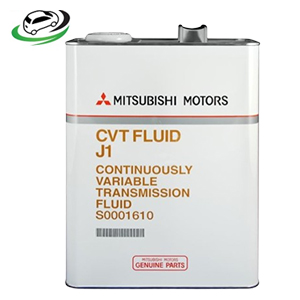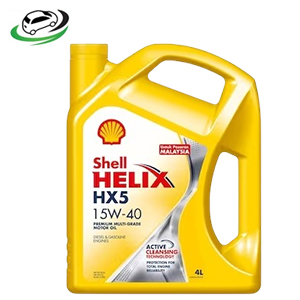-8%
Get Toyota Auris Front Shock Absorber Assy 339066 in Kenya
A vehicle’s suspension system is central to delivering a smooth, controlled, and safe driving experience. Among its key components is the front shock absorber assembly, a vital part of the system that directly affects handling, stability, and comfort. While it often goes unnoticed, this component plays a crucial role every time a vehicle hits a bump, corner, or accelerates.
Let’s explore in detail what a front shock absorber assembly is, how it works, and why it’s critical for maintaining proper vehicle dynamics.
What Is a Front Shock Absorber Assembly?
A shock absorber assembly is more than just a single component—it’s a combination of several parts working together to dampen the motion of the vehicle’s suspension system. Located between the wheels and the vehicle chassis, the front shock absorber is specifically positioned to handle the vertical energy and forces acting on the front suspension.
The complete front assembly typically includes:
-
Shock absorber (damper)
-
Coil spring (if part of a strut assembly)
-
Mounting bushings and hardware
-
Strut mount or bearing plate (in MacPherson strut setups)
-
Dust boot and bump stop
Depending on the suspension design, the front shock absorber may be part of a strut assembly (common in many vehicles) or mounted separately in systems with control arms and torsion bars.
Purpose and Function
The primary role of a shock absorber is to control the rebound and compression of the suspension springs. Without shock absorbers, the springs would continue to oscillate after hitting a bump, causing the vehicle to bounce uncontrollably.
Key functions include:
-
Damping Road Impact: Absorbs and dissipates kinetic energy from road irregularities like potholes, bumps, or uneven surfaces.
-
Improving Handling: Maintains consistent tire contact with the road surface, especially during acceleration, braking, and cornering.
-
Enhancing Comfort: Reduces cabin vibrations, allowing for a smoother and more comfortable ride.
-
Supporting Braking Performance: Prevents nose-diving during hard braking by controlling weight transfer to the front axle.
-
Ensuring Stability: Keeps the vehicle body level and reduces body roll during cornering.
How It Works
A typical shock absorber operates using hydraulic damping. Here’s a simplified explanation:
-
Inside the Cylinder: The absorber consists of a piston that moves up and down within a sealed cylinder filled with hydraulic fluid.
-
Damping Action: As the piston moves (due to suspension travel), the fluid is forced through small internal valves, which control the speed of piston movement.
-
Resistance to Motion: This controlled resistance slows down the spring’s compression and rebound, stabilizing the vehicle.
-
Heat Dissipation: The energy from suspension movement is converted into heat and dissipated through the hydraulic fluid and shock body.
More advanced systems may use gas-charged shock absorbers or electronically controlled dampers that adjust in real-time based on driving conditions.
Key Components in the Assembly
1. Damper (Shock Body)
This is the core of the assembly and provides the actual damping force. It’s usually made from steel or aluminum, with precision-engineered valves and seals.
2. Spring (if included)
In strut-style assemblies, a coil spring is integrated to support the weight of the vehicle and absorb major road impacts. The shock then controls the spring’s motion.
3. Strut Mount or Bearing Plate
The top of the shock connects to the vehicle frame via a rubber-insulated mount that may also include a bearing, allowing the shock to rotate with the steering.
4. Dust Boot and Bump Stop
The dust boot protects the piston rod from dirt and debris, while the bump stop cushions the impact when the suspension bottoms out.
5. Mounting Hardware
Bolts, washers, and bushings secure the assembly in place and absorb minor vibrations to reduce noise.
Signs of Worn Front Shock Absorbers
Over time, shock absorbers wear out due to the constant mechanical stress and exposure to heat, dirt, and moisture. Here are some signs that the front shock absorber assembly may need inspection or replacement:
-
Nose Dives During Braking: Excessive front-end dipping when braking.
-
Uneven Tire Wear: Shock failure can lead to poor tire-to-road contact, causing patchy wear.
-
Poor Handling or Drifting: Loose steering, reduced control during turns, or a floating feeling.
-
Unusual Noises: Clunking, knocking, or squeaking over bumps.
-
Visible Leaks: Hydraulic fluid seeping from the shock body.
-
Excessive Bouncing: The vehicle continues to bounce after hitting a bump.
A simple test is the “bounce test”: push down firmly on the vehicle’s front end and release. If it bounces more than once or twice, the shocks may be worn.
Benefits of a Healthy Front Shock Absorber Assembly
Maintaining a well-functioning shock absorber assembly ensures multiple benefits:
-
Safety: Reduces stopping distance and helps maintain vehicle control during emergency maneuvers.
-
Ride Quality: Smoothens out vibrations and jolts, making daily driving more comfortable.
-
Tire Longevity: Promotes even tire wear by keeping tires in proper contact with the road.
-
Component Protection: Limits excessive movement that can damage suspension arms, bushings, and steering components.
-
Fuel Efficiency: Stable suspension geometry can improve aerodynamic stability and reduce rolling resistance.
Construction and Material Quality
Modern shock absorber assemblies are built to high engineering standards. The cylinder bodies are usually constructed from durable materials like:
-
High-strength steel for cost-effectiveness and durability
-
Aluminum for lighter weight and better heat dissipation
Internal components like valves and seals are precision-machined to handle thousands of cycles per minute. Gas-charged units incorporate nitrogen gas to prevent fluid foaming and improve response.
The external finish is often coated with corrosion-resistant paint or zinc for longer service life in all weather conditions.
Preventive Maintenance Tips
-
Inspect Regularly: Visually check the shock body for leaks, rust, or damage during routine servicing.
-
Check During Alignment: A suspension check is often included during wheel alignment services. Take advantage of these opportunities.
-
Replace in Pairs: Always replace both front shock absorbers at the same time to maintain balanced handling and ride height.
-
Follow Manufacturer Guidelines: Many shock absorbers last between 60,000 to 100,000 km, but replacement intervals can vary based on road conditions and usage.
Conclusion
The front shock absorber assembly is an indispensable component in any modern suspension system. It enhances vehicle stability, control, comfort, and safety. From absorbing harsh road impacts to preventing excessive body movement, this assembly quietly performs critical functions every time a vehicle is driven.
Maintaining or replacing the front shock absorber assembly as part of regular vehicle upkeep ensures a smoother ride and extends the life of surrounding components. It’s a smart investment in both comfort and long-term vehicle health.
Follow us on Facebook for more parts.



